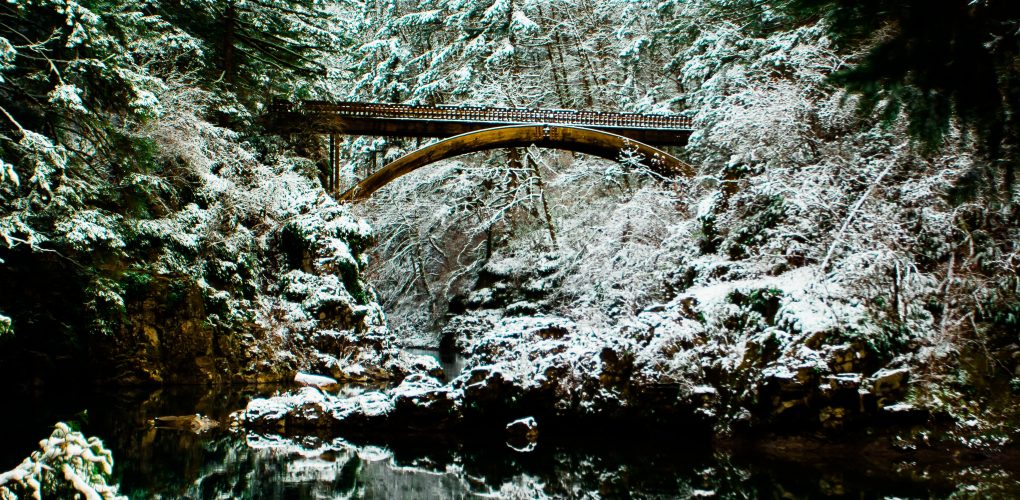Are you concerned about the effect that environmental regulations could have on your bridge maintenance and construction projects?
Do you want to avoid causing harm to animals, birds, rare plants, or waterways?
Would you like to limit emissions that pollute the air and increase global warming and climate change?
Do you worry that you might be fined — or worse — for breaking environmental laws?
Check out these five ways to minimize environmental issues when building or repairing bridges.
1. Pay attention to seasonality.
There are certain times of the year when bridge development, maintenance, and repair work has a greater impact on the environment. The exact timing depends on the site, individual circumstances, and species involved.
Work closely with local officials and environmental experts to schedule bridge projects in order to avoid:
- Affecting egg incubation, juvenile rearing, and downstream migration cycles of fish.
- Harming other types of sensitive wildlife.
- Cutting down trees or modifying structures while birds are nesting.
- Damaging rare plant species during growing season.
Doing due diligence prior to beginning maintenance, repair, or construction work will help prevent mistakes that could negatively affect the environment, the reputation of your business, and your bottom line.
2. Take advantage of ABC construction techniques.
Accelerated bridge construction (ABC) can significantly limit the impact of construction and rehabilitation projects on the environment, especially when working over waterways with sensitive fish populations.
Using prefabricated bridge elements and systems helps make construction less disruptive to the areas surrounding work zones. In some cases, bridge components are moved into place when they’re ready to install. In others, complete finished bridges are slid into their final locations.
In either case, the environmental impact is far less than doing complete, end-to-end construction work on site. Overall development time is lowered, and most of the work is done off site in controlled spaces. In many situations, less heavy equipment is needed and any pollution and damage is limited.
3. Protect bird and bat roosts.
Nests and roosts built on and around bridge structures are often regulated by the Migratory Bird Treaty Act. Because of this, many bridge maintenance projects have to take place off season so active nests aren’t disturbed. In some cases, large unoccupied nests may need to be relocated during the off-season.
To prevent this inconvenient and costly issue, many new bridges are designed with features that prevent birds from nesting. Existing structures are retrofitted with things like nets and special coatings that make it harder for birds to build nests on them.
Not sure how to deal with nests already on bridge sites? Don’t take chances. The legal repercussions are significant. Consult with legal, regulatory, environmental, and wildlife experts in your area to make sure you handle everything correctly.
4. Reduce the use of large equipment.
Large, powerful construction vehicles can tear apart natural environments and foul the air and water. It often takes years or even decades for nature to recover from their use.
One solution: Geosynthetic-reinforced soil (GRS) abutments and walls reduce dependence on large equipment to build bridge abutments. The Federal Highway Administration (FHWA) has done considerable research on this subject and found that GRS provides significant benefits when used in environmentally sensitive areas.
Another option: Use modern lifts like those supplied by BridgeMasters. Most have small footprints while still allowing workers to safely access hard-to-reach sections of bridges. An expert at BridgeMasters can explain their specific environmental benefits for your projects.
5. Leverage modern engineering and development techniques.
The latest bridge design and construction techniques make today’s structures lighter and reduce their footprints. In many cases, they span relatively wide streams and rivers and have little or no contact with waterways, which limits the impact on sensitive aquatic populations. Thoughtful design also reduces the chance for contact with migrating birds.
In addition, smart planning and scheduling can limit pollution and damage during construction. A good project manager is able to sequence activities to limit environmental impact. They can reduce the amount of equipment used on site and its movement, along with shortening the length of projects. You owe it to yourself to partner with the best experts before beginning work on projects.

